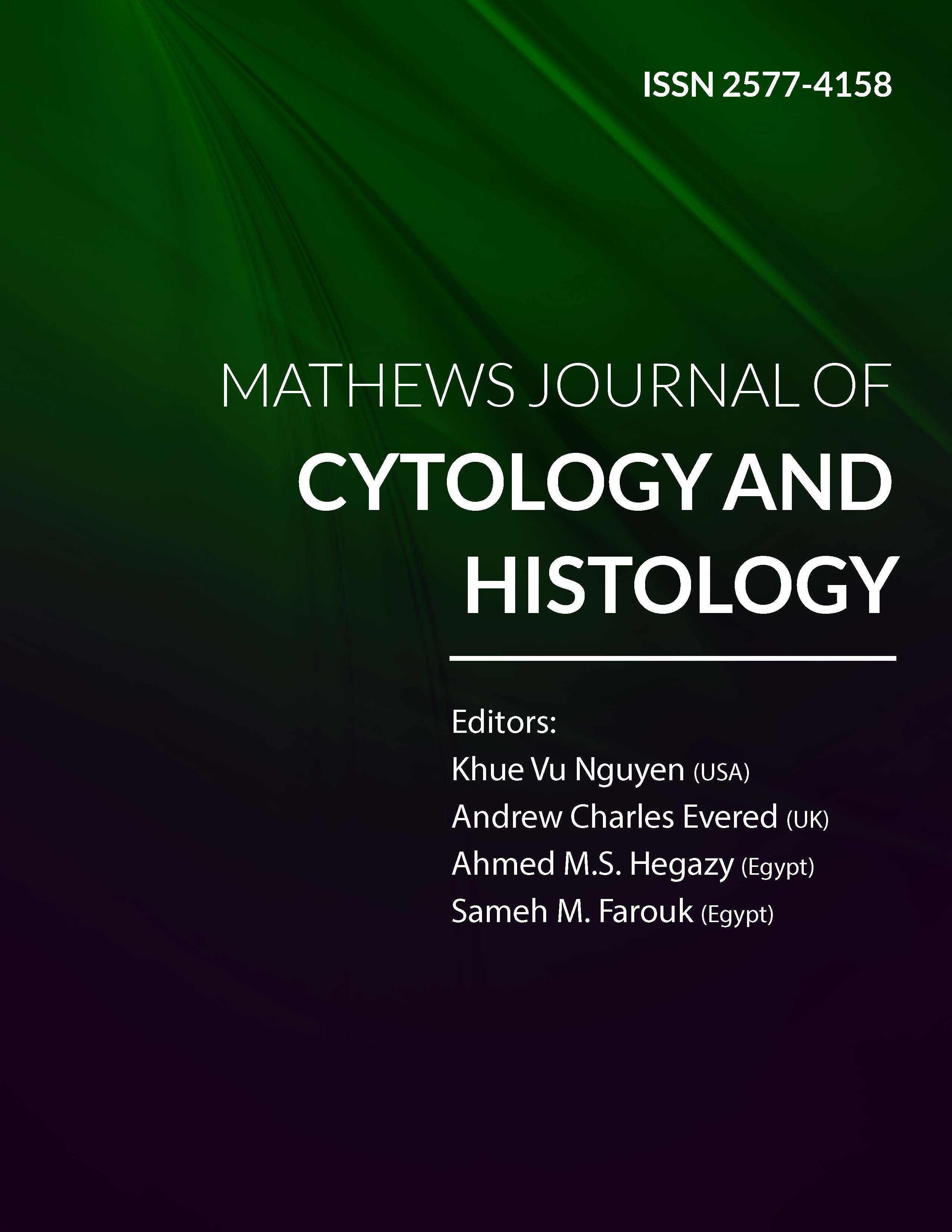
Information Links
Previous Issues Volume 1, Issue 1 - 2017
Histomorphological Developmental Studies of the Left Ovary in the Japanese Quail (Coturnix Coturnix Japonica)
Gamal K Mohamed1 , Aziza A Selim1 , Hanan H Abdelhafeez1 *, Marwa B Mohamed2
1Department of Anatomy and Histology, Faculty of Vet. Medicine, Assuit University, 71526, Egypt.
2Department of Histology, Faculty of Veterinary Medicine, New Valley University, Assuit University, Egypt.
Corresponding Author: Hanan H Abdelhafeez, Department of Anatomy and Histology, Faculty of Vet. Medicine, Assuit University, 71526, Egypt Tel: +20 109 144 9737; E-Mail: [email protected]
Received Date: 28 Mar 2017
Accepted Date: 02 Jun 2017
Published Date: 07 Jun 2017
Copyright © 2017 Abdelhafeez HH
Citation: Mohamed GK, Selim AA, Abdelhafeez HH and Mohamed MB. (2017). Histomorphological Developmental Studies of the Left Ovary in the Japanese Quail (Coturnix Coturnix Japonica). Mathews J Cytol Histol. 1(1): 002.
ABSTRACT
72 Japanese quail embryos (Coturnix coturnix japonica) were collected during 3, 5, 7, 9, 11, 13, 15, 17 days of incubation, and one day after hatching and were used for studying the development of the ovary. At 3 day, the indifferent gonads appeared as bilateral cellular thickening located ventromedial to the mesonephros. At this stage, extragonadal germ cells (tissue germ cells) which measured([13, 74), in diameter could be seen migrating in the dorsal mesentery of the hindgut. They had an amoeboid shape. Also circulating germ cells could be demonstrated within the intraembryonic blood vessels near the genital ridges, and had a small diameter about 11.20μm. At 5 day, the left gonads were larger than the right one. These gonads were indifferent, not distinguished into ovaries or testis morphologically or histologically, both consisted of an outer surface epithelium covered a central core of epithelial cell cords.It appeared as a bud-like extension from the germinal epithelium and, was surrounded by the mesenchymal tissue; the prospective stroma of the developing gonad. Few primordial germ cells could be demonstrated between the surface epithelial cells. Macroscopic and Histological sex differentiations were demonstrated at the seventh day of incubation. Left ovary showed a primitive cortex and a primitive medulla. Most germ cells of ovarian cortex were small oogonia beside the few large primordial germ cells. Mitotic figures were frequently demonstrated at this stage. The ovarian medulla was formed of medullary cords, blood vessels and lacunar channel system lined by cuboidal and flat cells and few interstitial cells. At 9 day, the cortex and the medulla were separated by thin layer of connective tissue. The cortex was divided into numbers of the lobe-like structure by surface epithelial invaginations. At 11-17 day the quail ovary was well-organized into an outer cortex and inner medulla. At the day 11, meiotic germ cells were first detected only in the left ovarian cortex.The ovarian cortex was characterized by the presence of two types of germ cells: oocytes located in the central region and oogonia that present in aggregates mainly in the extremities of the ovary, besides to the epithelial cells. At 13 day, interstitial cells were arranged in small cords or groups or single cells in the medulla. At 15 day, the left ovarian cortex was characterized by the presence of cell nests and more interstitial cells with lipid droplet arranged in small groups. The tunica albuginea was formed. The first evidence of primordial follicle formation was demonstrated in the left ovarian cortex of the quail at one day after hatching. The number of germ cells was reached the maximal value at 15th day of incubation declined gradually and reached a minimal value at one day after hatching. The present study showed that 70% of the peak numbers of germ cells was survived in the left ovary of the quail.
KEYWORDS
Ovary; Quail; Embryos; Development; Histochemistry.